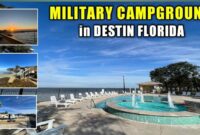Military Travel Site offers a comprehensive resource for military personnel, veterans, and their families, simplifying the often complex process of planning travel. This site addresses the unique needs of this community, providing tools and information to make travel easier, more affordable, and less stressful. From navigating travel allowances and deployment schedules to finding suitable lodging near bases, Military Travel Site aims to be the go-to resource for all your military-related travel needs.
The site’s design prioritizes user-friendliness and accessibility, offering a streamlined interface for easy navigation. It integrates with key travel services, providing seamless booking for flights and accommodations. Furthermore, the platform features a robust content library offering informative articles, travel tips, and resources tailored specifically to the military community.
Content Strategy
A robust content strategy is crucial for attracting and retaining military travelers to our site. We need to provide valuable, relevant information presented in a trustworthy and engaging manner, addressing the unique needs and concerns of this audience. This involves a multi-faceted approach encompassing informative content, security assurances, and a well-structured content calendar.
This section details the content strategy, outlining examples of suitable content, methods for building trust, and a proposed content calendar.
Informative and Engaging Content Examples
Providing valuable information is key to attracting and engaging our target audience. The following examples represent diverse content types that cater to various interests and needs of military travelers.
- Destination Guides: Detailed guides focusing on military-friendly locations, including information on base access, nearby amenities, and activities suitable for families. For example, a guide to San Diego could highlight proximity to Naval Base San Diego, family-friendly beaches, and museums with military discounts.
- Travel Tips for Military Personnel: Articles covering topics such as utilizing military discounts, navigating travel regulations (e.g., PCS moves), and maximizing travel benefits (e.g., using space-available flights).
- Military-Specific Accommodation Options: Reviews and comparisons of hotels and other accommodations that offer military discounts or are known for their accommodating services to military personnel and families. This could include details on amenities such as on-site childcare or special needs facilities.
- Interviews with Military Travelers: Featuring stories from military personnel and their families about their travel experiences, providing firsthand accounts and relatable insights. This could include a video interview with a family discussing their trip to Disney World using their military benefits.
- Interactive Maps and Resources: Interactive maps highlighting military bases, airports, and points of interest relevant to military travelers, alongside links to relevant websites and resources. For instance, an interactive map could showcase all major US Air Force bases and link directly to each base’s website for contact and visitor information.
Strategies for Promoting Trust and Security
Military travelers often have specific security concerns. Building trust requires transparent communication and addressing these concerns directly.
- Data Security and Privacy Policies: Clearly outlining our commitment to data security and user privacy, emphasizing measures taken to protect personal information. This includes a detailed privacy policy readily available on the site.
- Security Tips for Military Travelers: Articles offering practical advice on safe travel practices, such as securing personal belongings, being aware of surroundings, and utilizing reputable travel resources.
- Partnerships with Military Organizations: Collaborating with relevant military organizations to endorse the site and build credibility. This could involve securing endorsements or links from official military websites.
- Transparency and Accuracy: Ensuring all information presented is accurate and up-to-date, citing reliable sources and avoiding misleading claims. This includes regularly reviewing and updating content to reflect any changes in regulations or policies.
- Secure Payment Gateways: Utilizing secure payment gateways for all transactions to protect user financial information. This would involve displaying security badges and certificates from reputable payment processors.
Content Calendar
A consistent content schedule ensures regular updates and maintains audience engagement. The following outlines a sample content calendar.
| Day | Content Type | Frequency | Example |
|---|---|---|---|
| Monday | Blog Post (Travel Tips) | Weekly | “Saving Money on Your Next Military PCS Move” |
| Tuesday | Destination Guide | Bi-weekly | “Exploring the Military-Friendly Attractions of Virginia Beach” |
| Wednesday | Social Media Post (Image/Video) | Daily | Image showcasing a family enjoying a military discount at a theme park. |
| Thursday | Military Accommodation Review | Weekly | Review of a hotel known for its military-friendly policies. |
| Friday | Quick Tip (Social Media) | Daily | Short video on packing essentials for a military travel trip. |
| Saturday | User-Generated Content (Travel Stories) | Weekly | Sharing a travel story submitted by a military member. |
| Sunday | Interactive Map Update | Monthly | Adding new points of interest or updating existing information on the interactive map. |
Technical Considerations
Building a secure and reliable military travel site requires careful consideration of various technical aspects to ensure data protection, system stability, and seamless integration with external services. This involves robust security measures, efficient architecture, and reliable integration processes.
The site must adhere to stringent security protocols to protect sensitive personal and travel data. This includes implementing robust authentication and authorization mechanisms, employing encryption techniques for data both in transit and at rest, and regularly conducting security audits and penetration testing to identify and mitigate vulnerabilities. Data privacy regulations, such as GDPR and CCPA, must be strictly adhered to, ensuring compliance with all relevant laws and regulations. Access control should be granular, allowing only authorized personnel to access specific data and functionalities.
Data Privacy and Security
Data privacy and security are paramount. The system must be designed to meet the highest security standards, utilizing robust encryption (both at rest and in transit), multi-factor authentication, and regular security audits. Compliance with relevant regulations like NIST Cybersecurity Framework and DoD standards is crucial. The database should be secured with appropriate firewalls and intrusion detection systems. Regular security assessments and penetration testing are vital to proactively identify and address vulnerabilities. Data loss prevention (DLP) measures should be implemented to prevent unauthorized data exfiltration. A comprehensive incident response plan should be in place to manage and mitigate security breaches effectively.
Integration with External Services
Seamless integration with external services like flight booking APIs (e.g., Amadeus, Sabre) and hotel reservation systems (e.g., Expedia, Booking.com) is essential for providing comprehensive travel options. This requires careful selection of APIs based on reliability, performance, and security features. Secure API keys and access tokens should be used to authenticate requests. Error handling and fallback mechanisms are crucial to ensure system resilience in case of API failures. Data transformation and mapping might be needed to ensure compatibility between different systems. Real-time data synchronization and update mechanisms should be implemented to maintain data accuracy. For example, the system might use webhooks or polling mechanisms to receive real-time updates on flight availability and pricing from the flight booking API.
Site Architecture
The site’s architecture should be scalable, reliable, and maintainable. A three-tier architecture, consisting of a presentation tier (web servers), an application tier (application servers), and a data tier (database servers), is a common and effective approach. A robust database system (e.g., PostgreSQL, MySQL) is necessary to store user data, travel itineraries, and other relevant information. Load balancing and redundancy mechanisms are essential to ensure high availability and prevent service disruptions. Cloud-based infrastructure (e.g., AWS, Azure, Google Cloud) can provide scalability, flexibility, and cost-effectiveness. Regular backups and disaster recovery plans are crucial to protect against data loss. The architecture should also be designed to accommodate future growth and expansion. For example, the system might start with a single database server, but as the user base grows, it can be scaled to multiple servers using database replication and sharding techniques.
Visual Design and Branding
This section outlines the visual style and branding guidelines for the military travel site, aiming to create a trustworthy, professional, and supportive online experience for service members. The design will reflect the values of the military while maintaining a modern and user-friendly interface. The overall aesthetic will be clean, efficient, and reassuring.
The site’s visual identity must convey reliability and competence, reflecting the high standards associated with military service. Imagery and color palettes will be carefully selected to avoid any perception of unprofessionalism or frivolousness. The branding will project a sense of security and support, ensuring users feel confident in the site’s ability to meet their travel needs.
Color Palette
The color palette will utilize a combination of sophisticated and trustworthy colors. The primary color will be a deep navy blue, representing stability, trust, and authority. This will be complemented by a secondary color, a muted gray, symbolizing professionalism and dependability. Accents of a subtle gold or bronze may be used sparingly to add a touch of prestige and recognition of service. This palette will be consistently applied throughout the site, ensuring a cohesive and professional look.
Imagery
High-quality photography will be central to the site’s visual appeal. Images should depict diverse service members in various travel scenarios, emphasizing positive experiences and successful journeys. Examples include: a soldier enjoying a relaxing vacation on a beach, a group of airmen exploring a historical site, a sailor participating in a local cultural event, or a family of military personnel enjoying quality time together during a leave. All images should be professionally shot, well-lit, and showcase diversity in rank, gender, and ethnicity. Avoid overly staged or cliché imagery; instead, focus on realistic and relatable scenes that resonate with the target audience. Images will be optimized for web use, ensuring fast loading times and a smooth user experience.
Typography
The site will utilize a clean and easily readable typeface. A strong, sans-serif font like Open Sans or Roboto will be used for headings and body text, ensuring clarity and professionalism. A complementary serif font, such as Merriweather or Lora, might be used sparingly for emphasis or in specific sections to add a touch of elegance. Consistent font sizes and styles will maintain visual hierarchy and improve readability. Font sizes will be optimized for various screen sizes and devices, ensuring optimal viewing across different platforms.
Logo and Branding Elements
The logo will be a clean and modern design, incorporating elements that subtly reflect military service without being overtly aggressive or militaristic. It should be easily recognizable and memorable, reflecting the site’s purpose and values. Branding elements, such as icons and buttons, will be consistent with the overall design, using the established color palette and typography. The site will maintain a consistent brand voice throughout, reflecting professionalism and support.
Image Usage Guidelines
All images used on the site must be high-resolution, professionally shot, and ethically sourced. Images depicting sensitive situations or potentially offensive content will be strictly avoided. Proper attribution will be given where necessary. Images will be optimized for various screen sizes and devices to ensure optimal display and fast loading times. The site will adhere to all relevant copyright and usage regulations.
Legal and Compliance
Building a trustworthy military travel site requires careful consideration of various legal and regulatory frameworks. Failure to comply can result in significant legal repercussions, reputational damage, and loss of user trust. This section outlines key legal considerations and compliance processes.
Data privacy and accessibility are paramount. Stringent regulations govern the collection, storage, and use of personal information, particularly for individuals associated with the military. Furthermore, ensuring the site is accessible to all users, including those with disabilities, is a crucial legal and ethical responsibility.
Data Privacy Laws and Regulations
This section details relevant data privacy laws and regulations applicable to military travel websites. Compliance with these laws is mandatory to avoid penalties and maintain user trust. The site must adhere to regulations like the General Data Protection Regulation (GDPR) in Europe and the California Consumer Privacy Act (CCPA) in the United States, if applicable, depending on the site’s target audience and geographic reach. These laws dictate how personal data is collected, processed, stored, and protected, requiring explicit user consent and providing mechanisms for data access, correction, and deletion. Furthermore, robust security measures are essential to prevent data breaches and unauthorized access. Specific provisions may also apply depending on the country or region where the data is stored or processed. For example, the GDPR imposes strict rules regarding the transfer of personal data outside the European Economic Area (EEA). Any data collected must be relevant, limited to the purpose specified, and retained only for as long as necessary.
Accessibility Standards Compliance
Ensuring the website is accessible to all users, including those with disabilities, is a legal requirement under the Americans with Disabilities Act (ADA) in the United States and similar legislation in other countries. This involves adhering to accessibility guidelines such as the Web Content Accessibility Guidelines (WCAG). These guidelines specify technical requirements for creating accessible web content, including providing alternative text for images, ensuring sufficient color contrast, and making the site navigable using keyboard-only input. Regular audits and testing are necessary to verify compliance and address any accessibility issues. Failure to comply can result in legal action and significant financial penalties. For example, a site that lacks proper screen reader compatibility could face lawsuits from users with visual impairments.
Obtaining Necessary Permissions and Licenses
Securing the necessary permissions and licenses is a critical step in launching a military travel site. This involves identifying all relevant regulatory bodies and obtaining the appropriate authorizations. Depending on the services offered, this may involve licenses related to travel agency operations, data processing, and potentially security clearances for accessing specific military-related information. The specific requirements will vary depending on the jurisdiction and the nature of the site’s operations. Thorough research and consultation with legal professionals are crucial to ensure full compliance. The process may involve submitting applications, providing detailed documentation, and undergoing inspections or audits.
Example Privacy Policy and Terms of Service
A robust privacy policy clearly outlines how user data is collected, used, and protected. It should specify the types of data collected, the purpose of collection, the data retention policy, and the user’s rights regarding their data. For instance, a privacy policy might state: “We collect your name, email address, and travel preferences to process your booking request. We will not share your data with third parties unless required by law.”
Similarly, the terms of service should clearly define the user’s rights and responsibilities, including acceptable use policies, liability limitations, and dispute resolution mechanisms. For example, a clause might state: “Users are responsible for ensuring the accuracy of the information provided. We are not liable for any losses incurred due to inaccurate information.” Both the privacy policy and terms of service should be easily accessible on the website and written in clear, understandable language.
Final Wrap-Up
Ultimately, Military Travel Site aims to empower military personnel and their families to travel with confidence and ease. By providing a centralized platform with essential tools and resources, the site simplifies the travel planning process and helps connect individuals with the information they need to make informed decisions. The focus on security, user-friendliness, and relevant content ensures a positive and supportive experience for every user.



